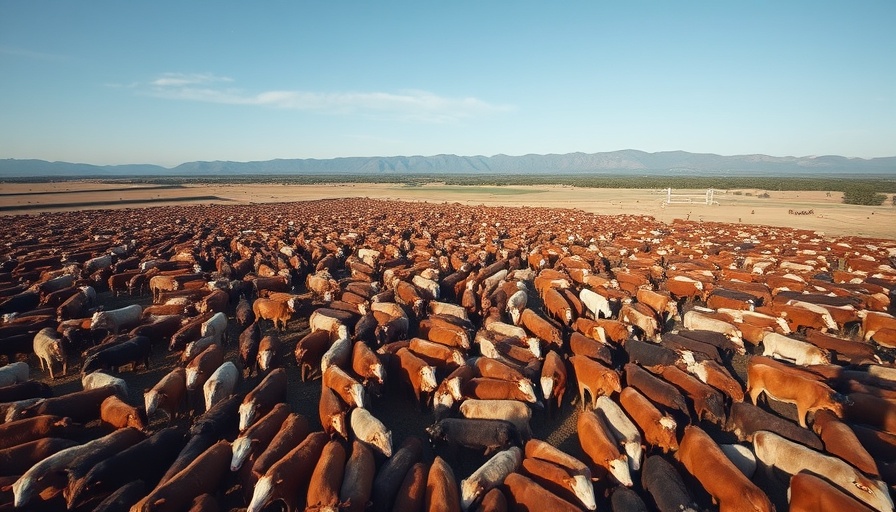
The Unseen Threat: Deadly Flies and Their Impact on Livestock
In a decisive move to safeguard the U.S. livestock industry, the U.S. Department of Agriculture (USDA) has temporarily restricted livestock imports at the southern border. This measure aims to combat the spread of the screw-worm fly, a pest known for devastating impacts on cattle health. USDA Secretary Brooke Rollins emphasized the urgency of the situation, recalling that a previous outbreak took nearly three decades to recover from. Such pests not only threaten animal welfare but also pose significant economic risks to farmers and the food supply chain.
Historical Context: Learning from the Past
Historically, outbreaks of pests like the screw-worm fly have catalyzed stringent measures. The last significant infestation in the United States severely impacted the cattle industry, ultimately affecting consumers and the broader economy. This context is crucial, as proactive measures today could prevent similar challenges in the future, protecting livelihoods and ensuring food security.
Fostering Connections: The Role of Community and Lawmakers
As the agricultural sector braces for potential repercussions, the importance of community support and legislative action cannot be overstated. Farmers, veterinarians, and local governments need to collaborate in early detection and reporting of possible infestations. Encouraging dialogue among stakeholders can lead to more effective strategies in managing agricultural threats, further highlighting the interconnectedness of these issues.
Future Outlook: Ensuring Agricultural Safety
The decision to close the border is a critical step amid growing concerns about pest invasions that can disrupt not only farming practices but also international trade. As regulations tighten, farmers and ranchers should stay informed about best practices and preventive measures that can safeguard their cattle from potential infestations.
In conclusion, understanding the implications of pest threats like the screw-worm fly is essential for everyone involved in the agriculture sector. It invites us to reflect on the interconnectedness of food safety, local economies, and legislative responsibility. Ensuring robust measures against such threats will serve us well in not just protecting our livestock, but in nurturing the ongoing health and sustainability of our food systems.
 Add Row
Add Row  Add Element
Add Element 



Write A Comment